Research Excellence Framework 2021
The results of the 2021 Research Excellence Framework (REF) were released on 12th May 2022.
We are delighted to have had the excellence of our research recognised, with nearly 80% of our publications having been assessed as “world-leading” and 75% of our impact having been judged “outstanding” in terms of its reach and significance. This cements our position as one of the top Computer Science departments in the UK, a position we have held for some time under different assessment methodologies.
As reported in the Times Higher Education (THE), Warwick Computer Science is ranked joint 4th (with the University College London) out of 90 UK computing departments. This cements our position as one of the top Computer Science departments in the UK, a position we have held for some time under different assessment methodologies.
Our continued success over the assessment period is particularly pleasing, as we have grown significantly in size and ambition during this time (our PhD student population has almost doubled and our research income has increased two-and-a-half times since 2013-14).
| Rank | Institution | GPA | FTE submitted |
|---|---|---|---|
| 1 | Imperial College London | 3.93 | 58.45 |
| 2 | University of Oxford | 3.81 | 73.65 |
| 3 | University of Birmingham | 3.77 | 42.70 |
| 4 | University of Warwick | 3.75 | 41.60 |
| 4 | University College London | 3.75 | 100.20 |
| 6 | University of Edinburgh | 3.73 | 144.04 |
| 7 | University of Bristol | 3.68 | 59.15 |
| 8 | Queen Mary University of London | 3.65 | 68.80 |
| 9 | University of York | 3.62 | 44.40 |
| 9 | University of Leeds | 3.62 |
34.25 |
An important feature of our research community is our strength across the spectrum from theoretical computer science through to applied research, stimulated by collaborations with academic and industrial partners internationally and linked to our regional economic base.
This outcome is a clear testimony to our high calibre academics, strong students and excellent professional staff that enable Warwick Computer Science to produce world-leading research, in terms of theory, foundations and applications to real-world challenges. I congratulate the whole department for these achievements! Professor Yulia Timofeeva, Head of the Department
The department thanks all its collaborators and external partners who have been directly and indirectly involved and continue being involved in various research projects in recent years, including our impact case studies partners.
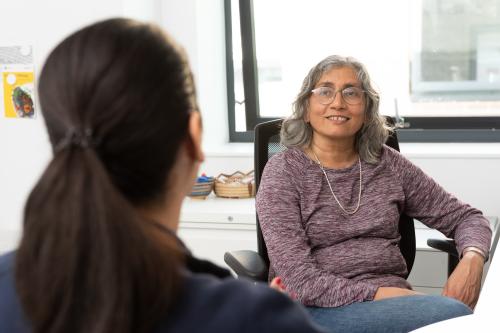
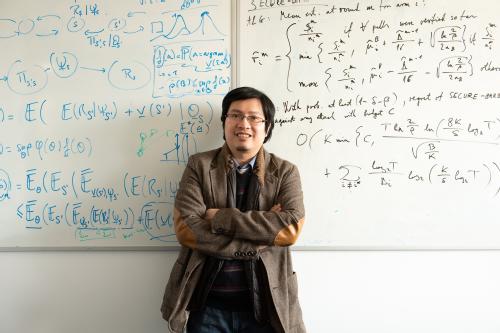
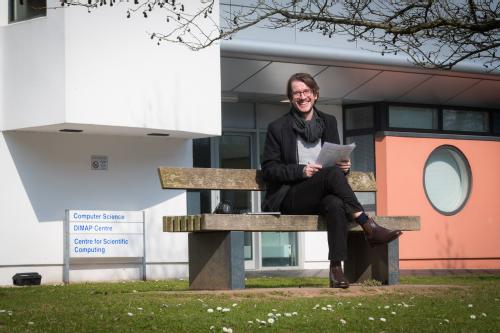
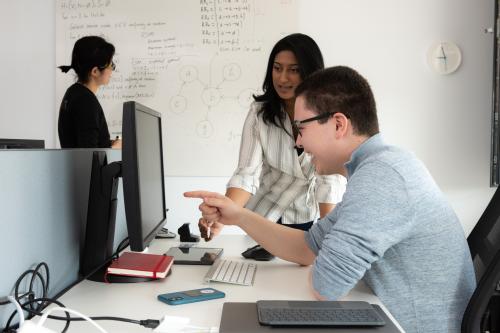
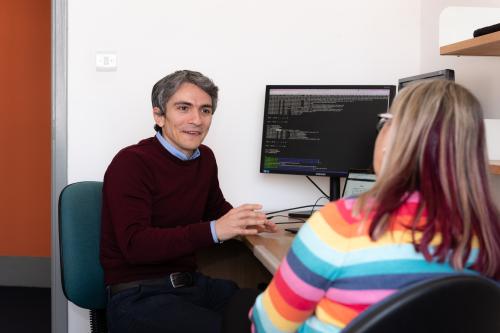
Impact of Image Analysis Research on Highly Accurate and Fast Fingerprint Matching
The spin-out company, Warwick Warp Ltd, founded by Dr Li Wang, Dr Abhir Bhalerao and Prof Roland Wilson from Computer Science, developed a new type of fingerprint matching technique which overcame accuracy limitations of previous biometric systems. The underpinning research was foundational work undertaken by the Image Processing Group in the 1990s and 2000s on joint time and frequency image representations, Prof Wilson and Dr Bhalerao's work on the modelling and analysis of natural textures and data compression, and Dr Wang's on research into retinal vasculature analysis and investigations into how to model the appearance of pores on human fingerprints.
Patented methods were incorporated into civil systems for very large-scale identity management, supporting many 100s of thousands of users in government and local police forces, and providing systems used in vital humanitarian and relief work by the UNHCR at several refugee sites in Africa and south-east Asia.
Dr Wang and Dr Bhalerao also went on to be founders of a second successful local company, Biosite Systems Ltd. which designed and manufactured a set range of security management systems incorporating real-time biometrics of many hundreds of identities in harsh environments, using bespoke software and networked hardware, such as automatic access gates. In daily use in the UK and abroad, Biosite Systems' products have allowed the efficient management of the movement of and critical health and safety of workforces at small and large building sites. It is a successful West-Midlands company, listed by Sunday Times Tech Track 100 and the FT1000's Europe: Fastest Growing Companies Index (2020), employing over 100 people, including a large qualified technical team of engineering and software experts.

Results of automatically pairing-up distinct ridge features between two live-scan fingerprint impressions of the same finger. Two fingerprints are said to be identical if enough matching feature are identified. Fingerprint matching can be in accurate because of the potential deformations ('warp') of a finger when pressed onto a fingerprint scanner. This makes it harder to find and correctly match distinctive features on the ridges (known as minutaie).
Some Publications and Patents
-
Wilson, Roland and Li, Chang-Tsun (2003). A class of discrete multiresolution random fields and its application to image segmentation. IEEE Transactions on Pattern Analysis and Machine Intelligence, Vol 25 (1). doi: 10.1109/TPAMI.2003.1159945
-
Parsons, Nicholas R., Smith, J. Q., Thönnes, Elke, Wang, Li and Wilson, Roland (2008). Rotationally invariant statistics for examining the evidence from the pores in fingerprints. Law, Probability and Risk, Vol 7 (1). doi:10.1093/lpr/mgm018
-
Wang, Li, Bhalerao, Abhir and Wilson, Roland (2007). Analysis of Retinal Vasculature Using a Multiresolution Hermite Model. IEEE Trans. on Medical Imaging, Vol 26 (2). doi: 10.1109/TMI.2006.889732
-
Wang, Li, Bhalerao, Abhir and Wilson, Roland (2008) Fingerprint matching method and apparatus, Warwick Warp Ltd, WO 2009/001121, UK Patent GB2441228B.
The Radio Five Hit List
Wire Free Productions approached Professor Rob Procter to discuss a programme format that they were developing. It was agreed that Procter’s research group would “review an agreed selection of social media and online sites in order to produce deliverables, including a chart of the top forty (40) social media trends (the “Five Live Hit List”). Twitter trends would drive the Hit List but it would also take into account a range of other online news sources.”
The Radio Five Live Hit List programme was hosted by Emma Barnett and broadcast on Sunday evenings from 7.30pm to 10pm on BBC Radio Five Live. The programme began on 9 November 2014 and 68 episodes (including two Christmas specials) were broadcast. While live on air, the chart was simultaneously shared at bbc.co.uk/5live and on @BBC5live, where links to associated audio and video clips, photos and articles were published, providing a one-stop shop for people looking for bite-sized shareable content. The Radio 5 Live Hit List averaged 228,250 listeners per episode and a 3.45% UK audience share. Quarterly listening figures ranged from 167,000 to 280,000 listeners per episode.
The Sunday Times reported that this was “…the first programme I can recall that seeks to address this brave new world head-on”. The Independent opined that “… this novel filtering system [reported] a mix of the serious and the frivolous … and an unusually wide-ranging and highly listenable snapshot of world events.”
In 2015, The Telegraph named the Hit List as one of the best podcasts for news, politics and business stating that the method for choosing the top 40 news stories meant that, “The result is a peppy survey of the zeitgeist, in which stories about the latest YouTube sensation rub shoulders with news from Westminster and beyond.”
Wirefree Productions benefitted too from this collaboration with Warwick, Husain Husaini, the Chief Executive stated: “…the Radio 5 Live Hit List proved to the BBC that Wire Free Productions were capable of producing high quality programming and its success led to further contracts with Radio 5 Live. These included the Jane Garvey and Peter Allen Show (which ran for 37 episodes in 2016-17) and Junior Doctor’s Diaries, a 3-episode special following the lives of junior doctors working in the NHS in 2017.”
Some Publications
- Wang, Bo, Liakata, Maria, Zubiaga, Arkaitz, & Procter, Rob (2017). TDParse – multi-target-specific sentiment recognition on Twitter. In Proceedings of the 15th Conference of the European Chapter of the Association for Computational Linguistics, Valencia, Spain, 3-7 April. https://www.aclweb.org/anthology/E17-1046/
- Wang, Bo, Liakata, Maria, Tsakalidis, Adam, Georgakopoulos, Agelos, Papadopoulos, Orestis, Apostolidis, Lazaros, Zubiaga, Arkaitz, Procter, Rob and Kompatsiaris, Yiannis (2017) TOTEMSS: topic-based, temporal sentiment summarisation for Twitter. In: International Joint Conference on Natural Language Processing, Taipei, Taiwan, 27 Nov - 1 Dec 2017. Published in: Proceedings of the IJCNLP, https://www.aclweb.org/anthology/I17-3006
- Zubiaga, Arkaitz, Voss, Alex, Procter, Rob, Liakata, Maria, Wang, Bo, & Tsakalidis, Adam (2017). Towards real-time, country-level location classification of worldwide tweets. IEEE Transactions on Knowledge and Data Engineering, 29 (9). https://doi.org/10.1109/TKDE.2017.2698463
Improving Air Quality in Cities |
Improving Health Outcomes with Artificial Intelligence |
